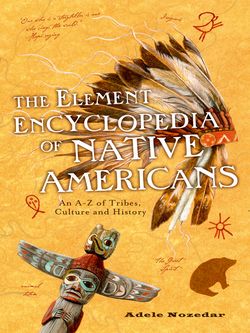Читать книгу The Element Encyclopedia of Native Americans: An A to Z of Tribes, Culture, and History - Adele Nozedar - Страница 93
CARLISLE SCHOOL
ОглавлениеAs part of the effort to “civilize” the Native Americans and recruit them into a European way of thinking, several boarding schools were established with the aim of assimilating Indian children into the culture of the white man.
The Carlisle Indian School was the first of these educational establishments, founded in Carlisle, Pennsylvania in 1879 by Captain Richard Henry Pratt. His aim was “ … to get the Indian away from the reservation into civilization, and when you get him there, keep him there.”
Pratt was authorized by the Federal Government to use the former Carlisle Barracks for the school. As part of the process of assimilation, it was deemed necessary to remove the Native American children from their parents and families, their traditional homes, and the way of life that they had followed for generations. In view of this fact, the Carlisle School, and others which emulated it, were situated away from the reservations.
It was suggested to the Native Americans that one of the reasons the white man had been able to dominate was that the Natives were not educated. If their children were brought up in the European way of education, and taught to read and write English, they would be better off for it. Accordingly, many Native families sent their children to the Carlisle School voluntarily. Subsequently, as 26 more schools sprang up using the example of the Carlisle School as their inspiration, the Bureau of Indian Affairs applied more pressure in separating children from their families.
At the Carlisle School, it was initially forbidden to use any language other than English, and when they first arrived children were given new English names. Also, a young student arriving at the Carlisle School would be given an enforced haircut. Many tribes believed that cutting the hair was a sign of mourning, and consequently the children would often weep until late into the night after this treatment. Their own clothes were taken away and replaced with formal Victorian dresses for the girls and military uniforms for the boys. There are archives of “before and after” photographs, ordered to be taken by Pratt, which were sent to Washington to show the difference in the children’s appearance to prove that all was in order.
For a student of the Carlisle School, the day’s regime was strict: the pupils were even expected to march, military-style, to their classes. The mornings were spent in academic studies (subjects included English, history, and math) and the afternoons were spent in learning skills that might be useful in adult life, such as woodwork and blacksmithing for the boys, laundering and baking for the girls. Children were inevitably schooled in the Christian faith. The rigid discipline of the Carlisle School also extended to its methods of punishment. Hard labor and confinement were usual for transgressors of the strict school rules. Children were even locked into the small cells of the former military guardhouse on the premises, sometimes for up to a week.
There were many critics of the Carlisle method of teaching, among them a former female pupil, Zitkala-Sa.
Many pupils struggled at the school—as well as the shock of separation from everything they held dear, including their parents, many died after contact with European diseases. Some 192 children, primarily from the Apache tribe, died and were buried at the school site.
One of the more successful programs of the Carlisle School was a scheme, invented by Pratt, called the Outing System. Students were sent to live with white families to observe their way of life and live within their society. After this experience students were able to train in various jobs, which eventually led to “legitimate” employment.
After Pratt retired in 1904, some of the stricter practices of the school were relaxed a little, and the emphasis shifted from the military and academic to sports and athletics. One pupil, Jim Thorpe, a Sauk whose original name was Bright Path, was a particularly brilliant sportsman, described at the time as the world’s greatest athlete. He went on to compete in the decathlon and pentathlon events at the 1912 Olympics, winning two gold medals.
The school eventually closed its doors in 1918.
